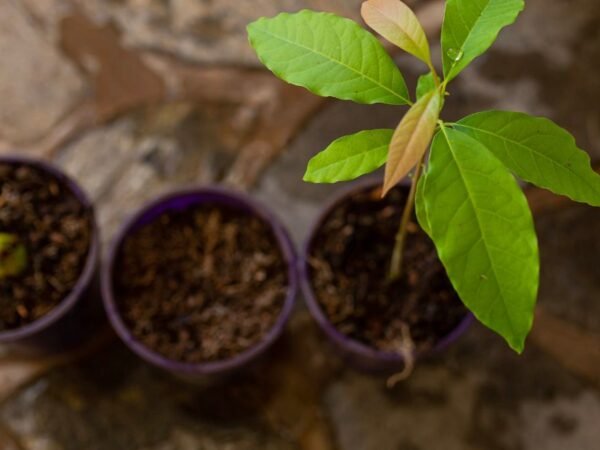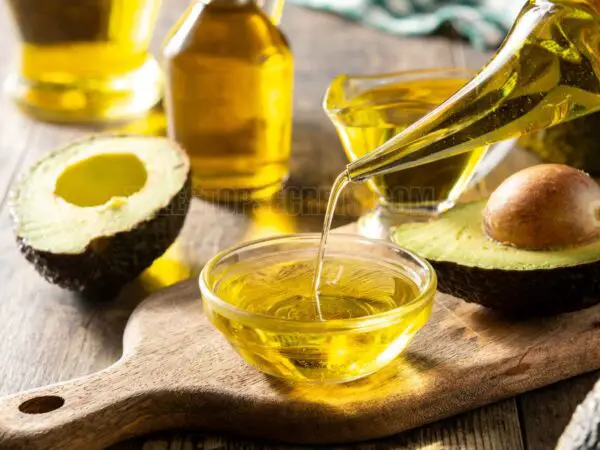Curious about how to spot a rotten avocado? Let's uncover the telltale signs that distinguish a perfectly ripe avocado from a spoiled one, including visible mold. From texture to color and flavor, we'll explore the stark differences that can help you avoid disappointment when slicing into your next avocado toast or guacamole creation. Stay tuned to learn how to save yourself from the disappointment of encountering a mushy, brown mess when expecting creamy green goodness.
Key Takeaways
-
Check for Mold: Look for any dark spots or mold on the surface of the avocado, indicating that it is rotten.
-
Texture Test: A rotten avocado will feel mushy and overly soft compared to a ripe one.
-
Color Clues: Rotten avocados often have dark, discolored patches or may appear excessively brown throughout.
-
Smell Check: Detect a sour or off smell when you sniff near the stem area of the avocado.
-
Avoid Sliminess: Rotten avocados can feel slimy when touched due to the breakdown of the flesh.
-
Remember the Signs: Keep in mind these indicators to ensure you pick fresh and ripe avocados.
Spotting Rotten Avocados
Color Changes
Avocados, particularly Hass variety, transition from bright green to dark green or brown as they ripen. Meanwhile, Zutano and Fuerte avocados maintain their green skin color regardless of ripeness. A black or nearly black skin with a mushy texture indicates an overripe and likely spoiled avocado.
Texture Differences
An underripe avocado is very firm and doesn’t give at all, while a ripe one gives slightly when pressed. On the other hand, an overripe avocado feels mushy and leaves a large dent when pressed. Keep in mind that a stringy texture alone may not indicate spoilage if other signs are absent.
External Appearance
When checking for signs of a rotten avocado, look out for dark spots, streaks, and a mushy texture. It's crucial to discard avocados with white or gray fuzzy mold on the skin or flesh. Exercise caution with avocados showing signs of decay, such as a darkened appearance.
Inside Look
To get a closer look at the state of an avocado, cut it open to check for any brown or black spots throughout the flesh. Avoid consuming avocados with mold that has penetrated the flesh. If you find mold inside the avocado, it's best to discard the entire fruit.
Ripe vs Rotten
Flesh Color
Light green flesh characterizes ripe avocados, while brown or black spots signify spoilage in rotten ones. Variations in flesh color serve as a crucial indicator of ripeness and freshness. Avocados with brown or black spots throughout the flesh are deemed rotten and should be discarded promptly.
Consistency Check
Gently pressing the avocado allows you to gauge its ripeness based on the dent it leaves. A mushy consistency suggests an overripe avocado that is likely spoiled. The firmness of the avocado plays a significant role in assessing its ripeness accurately.
Smell and Taste
Ripe avocados emit a pleasant aroma and boast a nutty flavor that signifies their optimal ripeness. Any abnormal taste, sour smell, or rancid aroma indicates spoilage, prompting immediate disposal. It's essential to be wary of potentially toxic compounds that can develop in spoilt avocados.
Understanding Avocado Flesh
Color Importance
Avocado varieties exhibit different colors as they ripen, ranging from green to dark purple or black. Color changes can signal ripeness or spoilage, guiding consumers in selecting quality avocados. The visual indicator of color plays a crucial role in determining avocado freshness.
-
Some avocados turn from green to dark brown or black when ripe.
-
A yellowish hue may indicate overripeness or even rot.
-
Green avocados are usually unripe and firm to the touch.
Chilling injury in avocados manifests as dark spots on the skin or flesh, affecting both quality and taste. Careful handling is essential to prevent chilling injury during storage. Avocados should be stored at temperatures above 40°F (4°C) to avoid this issue.
-
Chilling injury can lead to off-flavors and texture changes.
-
Symptoms include uneven ripening and accelerated decay.
-
Avocados affected by chilling injury may not fully ripen.
Chilling Injury
When avocados experience chilling injury, their skin or flesh might darken, impacting their overall quality and flavor. To prevent chilling injury, ensure that avocados are stored at temperatures above 40°F (4°C).
-
Store avocados away from refrigerated areas to maintain freshness.
-
Avoid exposing avocados to temperatures below 40°F (4°C) for extended periods.
-
Check for any signs of chilling injury before consuming the fruit.
Detecting Bad Avocados
Taste Test
Conduct a taste test to determine if an avocado is past its prime. Avocados with a sour or abnormal flavor should raise red flags. Trust your taste buds as they can easily detect any rancidity in spoiled avocados.
Smell Check
Use your sense of smell to detect any sour or rancid odors emanating from avocados. Discard avocados that give off a chemical smell or have an off-putting aroma. Be cautious of avocados emitting unpleasant odors, which could indicate spoilage.
Tips for Freshness
Storage Tips
Store ripe avocados in the refrigerator to extend their shelf life. Avoid storing avocados near ethylene-producing fruits to prevent overripening. Use airtight containers or plastic wrap to keep cut avocados fresh for longer.
Buying Guide
Choose avocados with firm skin and a slight give when gently pressed. Avoid avocados with dark blemishes or soft spots. Select avocados based on your consumption timeline to ensure optimal ripeness.
Handling Advice
Handle avocados gently to prevent bruising and damage. Store unripe avocados at room temperature to facilitate ripening. Use avocados promptly once they reach the desired ripeness level.
Summary
In conclusion, being able to distinguish between a ripe and rotten avocado is essential for enjoying this delicious fruit at its best. By understanding the visual cues, texture, and smell of avocados, you can easily spot the bad ones and ensure you always pick the perfect fruit. Remember to check for any dark spots, mushy consistency, or off-putting odors to avoid disappointment when cutting into your avocado.
To make sure you never have to deal with a bad avocado again, use the tips provided in this article to select only the freshest ones. Next time you're at the store or market, apply these techniques to choose avocados that are ready to be enjoyed in all their creamy goodness!
Frequently Asked Questions
What are the signs of a rotten avocado?
A rotten avocado typically has dark, mushy spots on its skin and may feel overly soft when gently squeezed. It might also emit a rancid smell, indicating spoilage.
How can you differentiate between ripe and rotten avocados?
Ripe avocados have a slightly yielding texture when pressed gently and maintain a vibrant green color. On the other hand, rotten avocados often appear discolored, have dark spots, and feel excessively soft or mushy.
What does bad avocado flesh look like?
Bad avocado flesh will be discolored with brown or black areas that have an unpleasant odor. The texture may also be overly mushy or slimy to the touch.
How can one detect if an avocado is bad?
To detect a bad avocado, look out for visible dark spots on the skin, check for any mold growth, and give it a gentle squeeze to feel for excessive softness or mushiness.
What tips can help ensure avocado freshness?
To maintain avocado freshness, store them in a cool place until ripe, then transfer to the refrigerator. Use plastic wrap to cover cut avocados tightly or sprinkle lemon juice on exposed flesh to prevent browning.
Image Source: Paid image from CANVA




